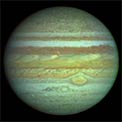
A. Brief Description: This book is a detailed curriculum and a supporting rationale for teaching community based education to children in special education. It is the result of 30 years of teaching experience and is based on the curriculum that slowly developed over this time span.School districts struggle with teaching children in special education because the classroom-fits-all approach is not adequate; special education students do not automatically transfer classroom based knowledge to the real world. We believe that a better way to teach these students is directly in the community.
As an author, I prefer an informal, humorous tone to my work. I am also a futurist so my tendency is to take the very long perspective and to mix technologies into the "story".
My professional education centered around vision and blindness. The number of children in special education with damage to vision processing is much larger than is generally acknowledged or understood by the current status quo. There is a strong visual system bias/emphasis to the book.
I am also a specialist in human navigation. Education and experience has taught me that children in special education struggle with where they are in space and with movement through the built environment. This puts them at risk and decreases their efficiency. This book is about the vision and navigation systems of children in special education, and it offers a sensible, practical approach for addressing their common problems.
B. Outstanding Features: There are six:
a. We discuss the vision system in detail and link this with a very practical curriculum. This blend of the technical with the everyday satisfies both the scientist and the teacher.C. Apparatus: The book will contain the following:b. We discuss the human navigation system in detail and at a brain level. This is a unique approach; you won't find it discussed in any other textbook that we know about.
c. The approach we use employs teams of students. Children are grouped by age and disability. Where individuals can not be independent, teams can be; this is a unique perspective.
d. The unique blending of orientation and mobility, physical therapist, and occupational therapist in a team teaching cooperative is also a distinctive feature of our approach.
e. The emphasis on cognitive awareness (required of students) is also a highlight of our approach. Children have to articulate why they are involved in community based education. At every turn, they must be able to articulate the lesson objectives and to provide demonstration or feedback to their teachers.
f. Common educational practices, standard good teaching strategies, are blended with the unique approach of the orientation and mobility profession. This broadens the concept of "good practices" as taught in the university teacher education curriculum.
a. Case studies and examples where appropriate
b. Lesson plans
c. Teaching suggestions
d. Chapter summaries
e. Extensive, colorful pictures showing staff and students engaged in activities under discussion
f. Bibliography
g. Index
h. Appendix with definitions and elaborations as needed
A. Primary Markets: There are three:
a. University programs teaching blind rehabilitationThe book could be used at the university undergraduate or graduate levels, and as either a basic or supplementary textbook..b. Special education teacher preparation programs
c. Occupational and/or physical therapy university training programs
B. Secondary Markets: There are three:
a. Professionals and specialists interested in the workings of the human vision systemThis book is suitable both for personal reference and for purchasing by special education teachers and administrators working in public schools, university programs, and rehabilitation facilities.b. Professionals and specialists interested in the workings of the human navigation system
c. Mental health professionals and their training programs
We are not aware of a comparable book. A quick Google search did not turn up anything close to what we have in mind.
Timetable for completing the book: Two years; October 2007 to October 2009. Much sooner if time constraints are reduced.
What portion has been completed: Considerable sections of the curriculum are on the internet.
When will sample chapters be available for review: They are a work in progress in May, 2006. Completion of a sample chapter will occur by October 2006.
Estimated size of the completed book: Between 250 to 400 pages depending on font sizes and number of supporting pictures.
Estimated number of photos drawings, charts, graphs, etc.: One hundred photographs
Has the material been class tested? We have been teaching community based education to children in special education for thirty years. each year we refined, rewrote, and polished the curriculum. Our work has stood the test of time and a full range of children with multiple disabilities.
A more comprehensive, informal Vita is available on this web site: My Credentials
Degrees:
Founder of:
Associate of Science: Flint Community College
Thirty years teaching experience at the Millet Learning Center; a public school for handicapped children.
Undergraduate work: University of Michigan; Pre-medical
Bachelor of Science in Vision Science: Illinois College of Optometry
Doctor of Optometry: Illinois College of Optometry
Masters in Blind Rehabilitation: Western Michigan University
The Special Needs Vision Clinic for Handicapped Children
The Institute for Innovative Blind Navigation
The Community Travel Program; Saginaw Public Schools
The John Moore School of Tomorrow
The Old Town Saginaw Music Association
The Heritage Square Neighborhood Association
The Center for Assistive Technology (in progress)
Section One: Special Education and the Human Brain
The Brain
Section Two: Community Based Education for Children in Special Education
The Vision System
The Human Navigation System
The Auditory System
The Somato-Sensory System
The Five Year Curriculum
Section Three:
Year One: The structure, mastering an indoor space (Rules, Routines, and Expectation)s
Year Two: Mind Management; controlling the body; time, money, space management
Year Three: The built environment; standard layouts, route travel
Year Four: Semi-independent travel
Year Five: Totally independent travel
Appendix
Bibliography
Index
